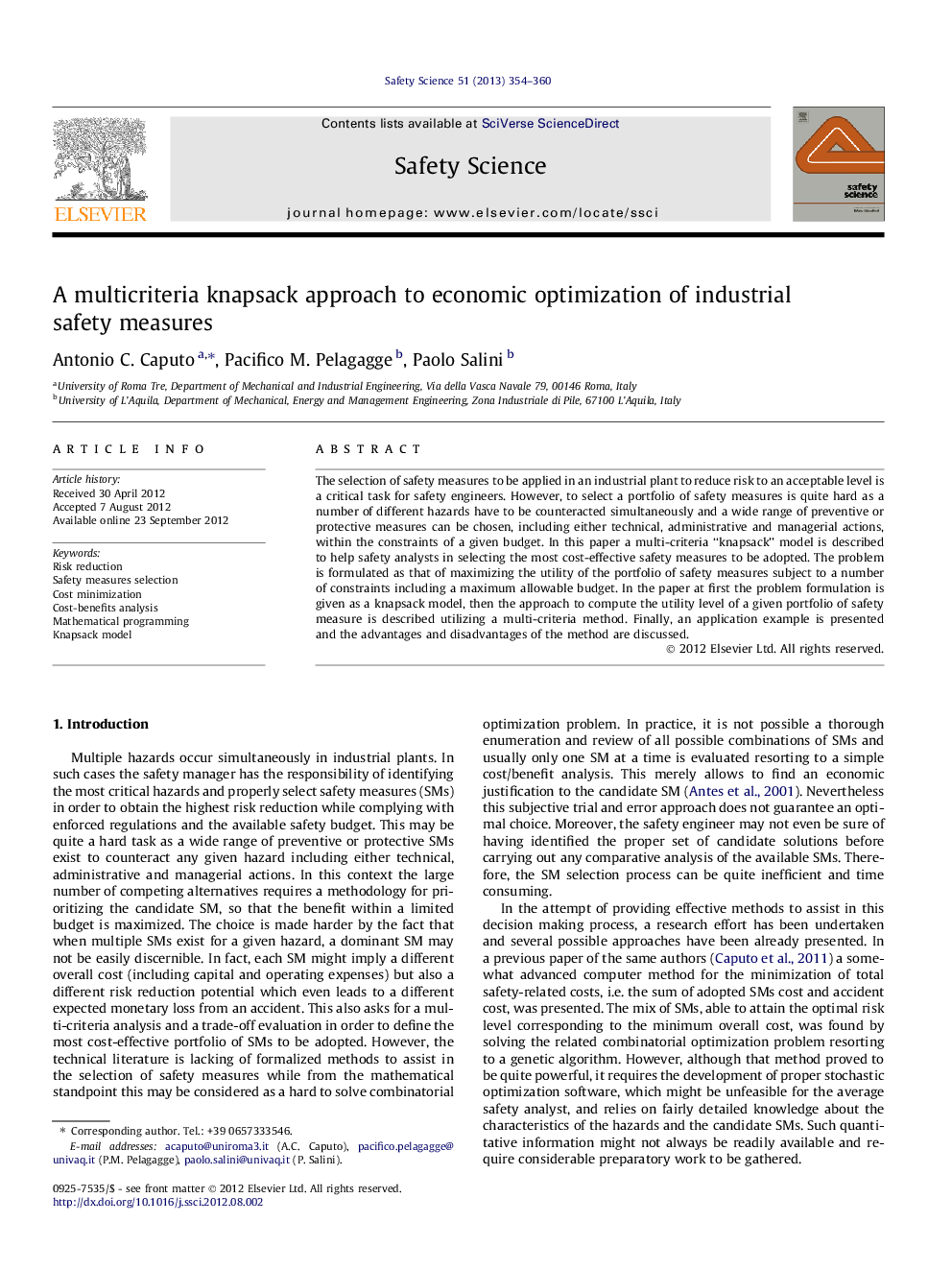| Article ID | Journal | Published Year | Pages | File Type |
|---|---|---|---|---|
| 589684 | Safety Science | 2013 | 7 Pages |
The selection of safety measures to be applied in an industrial plant to reduce risk to an acceptable level is a critical task for safety engineers. However, to select a portfolio of safety measures is quite hard as a number of different hazards have to be counteracted simultaneously and a wide range of preventive or protective measures can be chosen, including either technical, administrative and managerial actions, within the constraints of a given budget. In this paper a multi-criteria “knapsack” model is described to help safety analysts in selecting the most cost-effective safety measures to be adopted. The problem is formulated as that of maximizing the utility of the portfolio of safety measures subject to a number of constraints including a maximum allowable budget. In the paper at first the problem formulation is given as a knapsack model, then the approach to compute the utility level of a given portfolio of safety measure is described utilizing a multi-criteria method. Finally, an application example is presented and the advantages and disadvantages of the method are discussed.
• We present a methodology for optimal choice of safety measures in industrial plants. • A knapsack linear programming model allows utility maximization. • An optimal portfolio of safety measures complying with a limited budget is obtained. • The method allows quick multiple-criteria ranking for decision making. • It can be easily utilized by practitioners using spreadsheet software.
